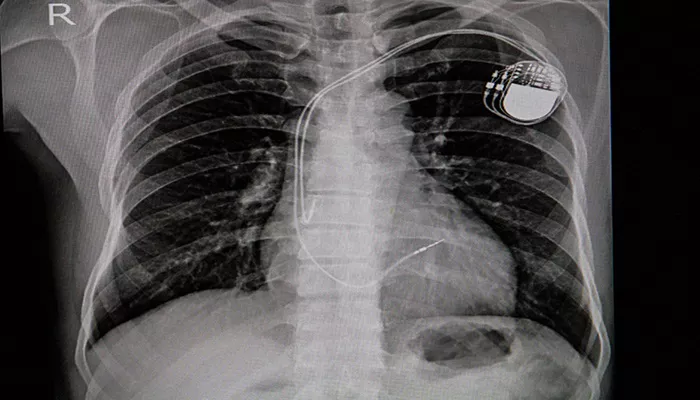Researchers have developed a self-assembling heart stimulator that can correct arrhythmias in emergency situations. This innovative device is created by injecting a solution of nanoparticles around the heart. Once injected, the nanoparticles form a temporary heart stimulator that can restore normal heart rhythm with the help of an external power source. After the treatment, the electrode naturally disappears from the body. The study demonstrating this technology was conducted on animals.
Understanding Arrhythmia
Arrhythmia is a condition characterized by disturbances in the heart’s electrical signals. These disturbances can cause the heart to beat too fast, too slow, or irregularly. While many cases of arrhythmia can be managed with medication, other methods, such as electrical signals from a defibrillator or a surgically implanted pacemaker, can also be effective. However, these interventions can be difficult to access in emergency situations, such as in war zones or during outdoor activities where defibrillators are unavailable.
The Role of Nanoparticles
Nanoparticles are extremely small particles that can be injected using a needle thinner than a human hair. When the nanoparticle solution comes into contact with heart tissue, it forms a structure around the heart. This structure consists of a long chain of molecules known as a polymer, which conducts electricity. The injected electrode integrates with the body’s cells, facilitating electrocardiogram (ECG) measurements, regulating heartbeats, and correcting arrhythmias.
Umut Aydemir, a doctoral student and the first author of the study, explains, “If you connect a mobile phone to the injection site near the heart, you can temporarily stimulate the heart’s rhythm for up to five days.”
How The Stimulator Works
The polymer created by the nanoparticles maintains intimate contact with the heart tissue. This design allows the stimulator to operate with low power inputs, which can come from handheld devices. Most people carry mobile phones, making this technology accessible. By using a cable connected to the skin at the injection site, charges from the phone can be transferred to the conductive electrode within the body. Researchers aim to develop an app that would allow users to regulate arrhythmia while awaiting further medical treatment.
Research Progress
So far, experimental studies have focused on small animals, including zebrafish and chicken embryos. This approach follows the 3R principle, which aims to reduce animal testing in mammals. Now that the concept has been optimized and shows great potential, the next step involves conducting studies in larger animals, such as pigs, to prepare for human trials.
Martin Hjort, an Associate Researcher in Chemical Biology and Therapeutics at Lund University, emphasizes the method’s advantages:
“The method is minimally invasive. Moreover, the heart stimulator spontaneously degrades and is excreted from the body after treatment, so it does not need to be surgically removed.”
SEE ALSO: What Is The Effect of Lidocaine on Arrhythmia?
Implications for Emergency Medicine
This self-assembling heart stimulator could revolutionize emergency medical care for patients experiencing arrhythmias.
Its ability to be injected quickly and its temporary nature make it an ideal solution in situations where traditional interventions are not feasible. By providing a means to stabilize heart rhythm in emergency settings, this technology has the potential to save lives.
Future Directions
As research progresses, the focus will shift to testing this technology in larger animal models. Successful trials in pigs will help determine the safety and efficacy of the heart stimulator before moving on to human clinical trials. If proven effective, this innovative approach could be integrated into emergency response protocols, especially in remote or resource-limited settings.
Conclusion
The development of a self-assembling heart stimulator represents a significant advancement in the treatment of arrhythmias. By utilizing nanoparticles to create a temporary electrode, this technology offers a minimally invasive solution for correcting heart rhythm in emergency situations. As research continues, the potential for this device to improve patient outcomes in critical scenarios becomes increasingly promising. The integration of mobile technology further enhances its accessibility, making it a valuable tool for emergency medical care.

